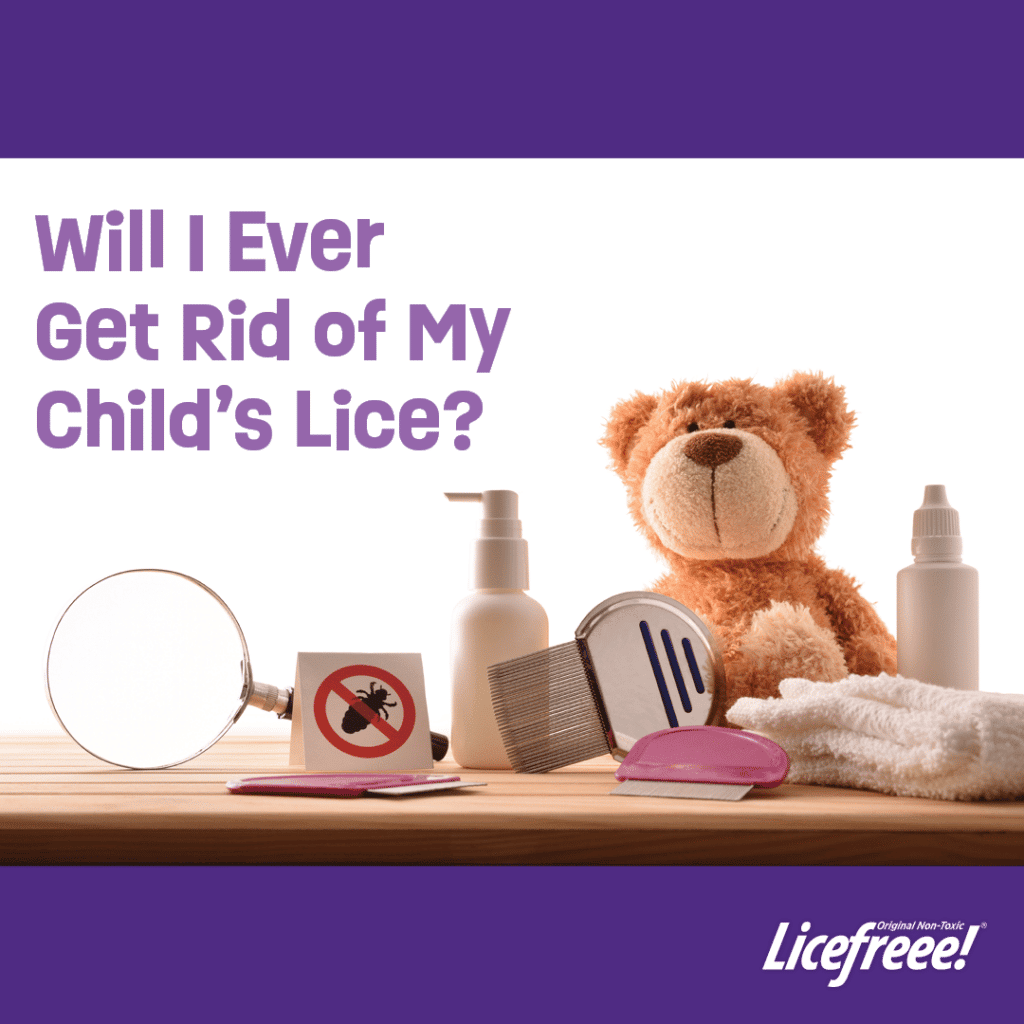
You have treated your child for head lice several times. You've done everything the experts have said, and your child has lice for the fourth time. You are frustrated and hate doing the treatment and the exhaustive combing. You hoped you had gotten rid of the lice for good. Now you ask yourself, Will I ever get rid of my child's lice?
The problem may not be your fault. The truth is you may have done everything right. Children, especially pre-school-age children, play close together. They play on the floor head-to-head. They share hats, stuffed animals, and headphones—all things that transmit head lice. Those six-legged head lice cling to the material, like the inside of a hat, and wait for their next head.
Head lice reinfestation occurs for two reasons: your child has been exposed to an infested individual, or the treatment did not work.
You can treat the lice, comb like an expert, and be lice-free for several weeks only to have your child come home again with lice. It's not that you didn't treat it correctly. It's that lice are so prevalent in school-aged children that it's hard NOT to get lice.
The clue for most parents that their child has lice is constant scratching of the head, but the truth is that many kids who get lice never scratch. Checking your child's head regularly is the best way to catch it as early as possible. It is as easy as brushing your child's hair and checking for lice eggs, or nits, and mature lice while you do it. Don't make a face, scream, or cry if you find them—it will make your child feel dirty and could affect their self-esteem. After all, they didn't invite the lice to the party, they are just the host!
Whether prescribed or over the counter, lice treatments don't always kill lice. Not because they aren't effective enough, it's because lice can lay up to eight eggs daily. Not treating on day one could cause you to have lice of various ages and eggs, making it harder to kill every louse. You may have to treat your child's lice more than once at 7-day intervals. And use the lice comb daily in between treatments.
Children in rural areas exposed to pesticides may have a harder time getting rid of lice. Pesticide exposure can create treatment resistance in lice. They can become resistant to even the strongest lice treatments.
There is a lot of false information and myths about lice floating around. Having genuine information about head lice will help you reduce the likelihood of them returning.
Lice leave urine and saliva on the scalp that is absorbed by the hair. This scent can last up to thirty days and lets other lice know that your child's head is a great spot to hang out. This makes your child's head attractive to new infestations.
Lice do not carry diseases. They also love clean hair. When your child washes their hair every day, and you've treated them for lice, their hair is squeaky clean and lice-ready.
Once you notice your child has lice, treat them immediately. Like ticks, lice love human blood, so treating them as quickly as possible is vital. The key is human blood, meaning lice live and breed on humans, not cats, dogs, or other family pets.
Once they fall off, the life span of lice is one to two days. The chances of getting lice from inanimate objects are pretty low. Most lice transmit from children putting their heads close together and coming in contact with the hair the lice are on. Unfortunately, there is no lice treatment yet that will eliminate lice permanently.
While hair dye can be poisonous to some head lice, it is not a recommended treatment, and the chemicals in those dyes are harsh and not meant for children. Many believe rubbing alcohol is a natural treatment for lice. They are wrong! There is no research to back this, and rubbing alcohol is toxic for children. Why would you use a toxic substance on your child's head? Proper lice treatments are toxic to lice, not your children, and are a much safer and more effective treatment for lice.
When treating your child's lice, always follow the directions on the box. The manufacturer's directions, when followed correctly, give you the best chance of getting the lice in a single treatment. When a product says you should treat the child's head twice, ensure you do the second treatment.
Licefreee offers a homeopathic spray-on lice treatment for lice and drug-resistant super lice. They make an Ultimate kit with enough product to treat your entire family! They also have a Home spray for bedding, furniture cushions, and stuffed animals that kills lice on contact. Using both products against lice ensures you get the lice at both sources.